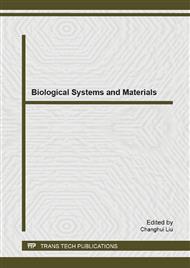p.8
p.14
p.20
p.26
p.33
p.38
p.47
p.53
p.60
Quantification Study on Bone Growth and Remodeling Adaptation Model Based on Experiment of Rapid-Growing Rats
Abstract:
In the 19th century, Julius Wolff put forward the law of bone transformation, it has been widely known that the trabecular structure of cancellous bone depend on the mechanical characteristic of cancellous bone. At present, in the field of bone remodeling and biomechanics, FE method and computer simulation are playing important role in simulating and predicting the bone mineral density or bone structure. To establish a quantized biological model of bone growth and remodeling adaptation, which integrates animal experiments, unknown parameter inversion identification of mathematical functions and technique of computer simulation. The 80 rats were randomly divided into three groups: 15 rats were in normal control groups, 45 in experiment groups, 20 in validation and prediction groups. By designing a new animal experiment, we investigate the effects of stress environments on bone growth and remodeling of rapid growing rats. And gather the bone mineral density (BMD) of proximal femur in the same interval for the unknown parameters (B and K) inversion of bone growth. The model of bone growth and remodeling advanced in this paper can not only numerically simulate the relationship between outer stimulus and the femur BMD variation of rapid growing rats, but also predict the growth trend of rat femur under different stress environments in its whole lifecycle.In this paper, we showed that the modeling ideas and methods for human bone reconstruction tips to provide clue and reference to establishing human model of bone growth and remodeling.
Info:
Periodical:
Pages:
33-37
Citation:
Online since:
May 2014
Authors:
Price:
Сopyright:
© 2014 Trans Tech Publications Ltd. All Rights Reserved
Share:
Citation:


